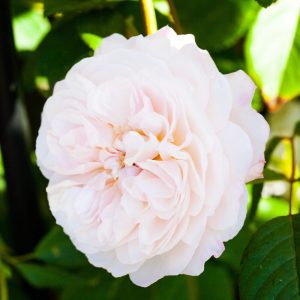Description
Escallonia is a genus of evergreen shrubs native to South America, characterized by their glossy green leaves and profuse clusters of tubular-shaped flowers in shades of pink, red, or white. Escallonias are versatile plants, suitable for a range of garden settings from formal to cottage gardens. They can be used as hedging plants or grown as stand-alone shrubs in borders or containers. Some popular companion plants for Escallonias include Lavender, Rosemary, and Hebe, which share similar growing conditions and make for a harmonious and fragrant planting scheme. Escallonias prefer full sun to partial shade and well-drained soil, and are generally low-maintenance plants that require little pruning or care.
Key Facts
- Common Name(s):Escallonia ‘Iveyi’
- Hardiness:Fully hardy through most of the UK
- How big will I get? Escallonia ‘Iveyi’ can grow to a height of 2m and a spread of 2m.
- Did You Know That:Escallonia are tolerant of salty air and are perfect for a coastal garden?
Plant Calendar
A rough guide to how this plant will change through the year.
| Jan | Feb | Mar | Apr | May | June | July | Aug | Sept | Oct | Nov | Dec | |
| Flowering Time | 
| 
| ||||||||||
| Foliage Colour |  |
 |
 |
 |
 |
 |
 |
 |
 |
 |
 |
 |
| J | F | M | A | M | J | J | A | S | O | N | D |

| 
| ||||||||||
 |
 |
 |
 |
 |
 |
 |
 |
 |
 |
 |
 |
Care Guide

Soil Requirements
Escallonia ‘Iveyi’ is a versatile plant and can cope with wet or drier soils, but prefers there to be decent drainage. This plant can grow in soil with a wide range of pH levels, it is not picky about the pH level of the soil.

Best Position
Escallonia ‘Iveyi’ can handle either an exposed or a sheltered position and can cope with either full sun or partial shade.

Maintenance
Escallonia ‘Iveyi’ is fairly low maintenance and doesn’t require any pruning. However it can be lightly shaped and tidied up after flowering as needed. It is important to not prune Escallonia in Spring as this may affect the flowering of the plant later in the season, although any damaged parts of the plant can be removed at any time.

Pest, Diseases and Wildlife
Escallonia ‘Iveyi’ can have problems with scale insects, it can be vulnerable to certain diseases such as leaf spot. It is also known to attract bees. It is not considered to be toxic.





